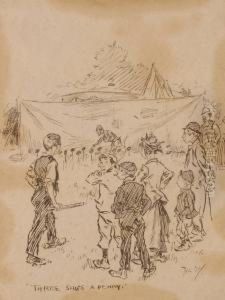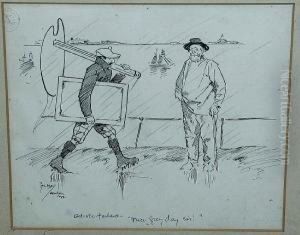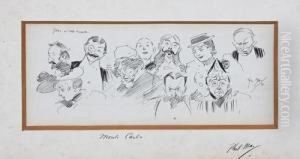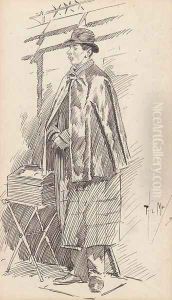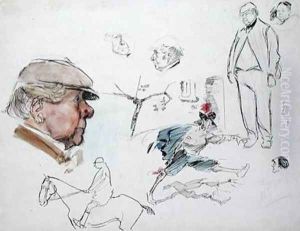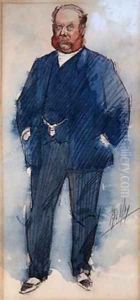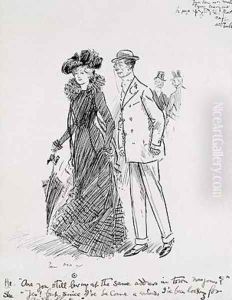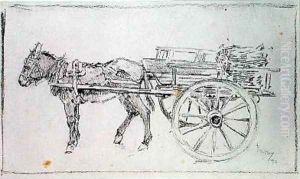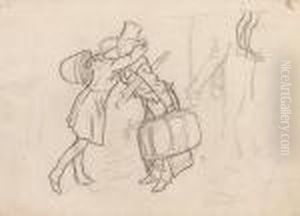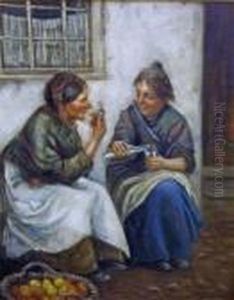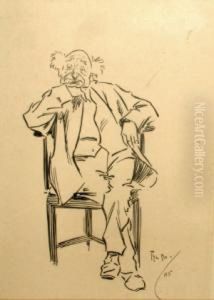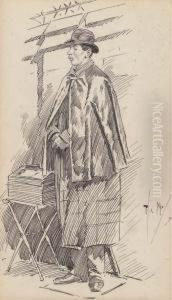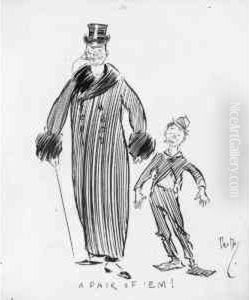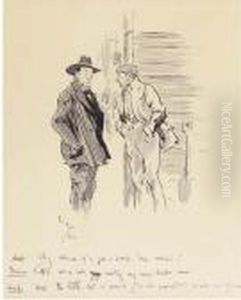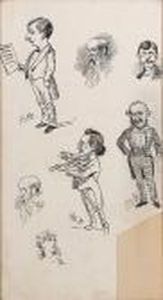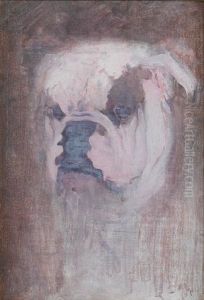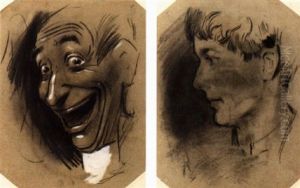Philip William May Paintings
Phil May, whose full name was Philip William May, was an English caricaturist who gained significant fame at the end of the 19th century for his humorous and satirical illustrations. Born on April 22, 1864, in Leeds, England, May was the son of an engineer who died when Phil was only nine years old. Following his father's death, he faced financial difficulties which led him to leave school at the age of 13 and work various jobs, including as a scene painter at the Leeds Grand Theatre.
Despite his early entry into the workforce, May pursued his interest in art and was eventually admitted to the Leeds School of Art. His talent was evident, and by the age of 14, he was contributing to the Yorkshire Gossip. In 1882, he moved to London, but with limited success, he ventured to Australia the following year. There, he worked for the Sydney Bulletin, where his sharp wit and distinctive style, characterized by economic use of line, gained him attention and popularity.
Returning to England in 1888, May worked for various publications, including the St. Stephen's Review, the Daily Graphic, and later, Punch magazine, where he became a staff member in 1892. His work was characterized by a minimalist approach, often using only a few lines to capture the essence of a character. Despite his seemingly simple style, his drawings exhibited keen observation and a strong sense of form.
May's subjects often included the social types and characters of the London streets, and through his art, he offered commentary on social issues and the class system of his time. His characterizations, although exaggerated, were not cruel and were often filled with humor and humanity. Phil May was also a member of the London Sketch Club, which was an association of professional artists.
Tragically, May's life was cut short by tuberculosis. He died on August 5, 1903, at the young age of 39. Despite his short career, Phil May left a lasting legacy on the world of caricature and illustration. His work was collected into several books and continued to influence artists well into the 20th century. His ability to communicate through minimalist drawings remains an inspiration for cartoonists and illustrators around the world.








